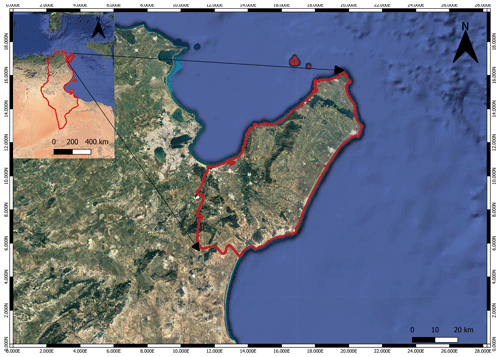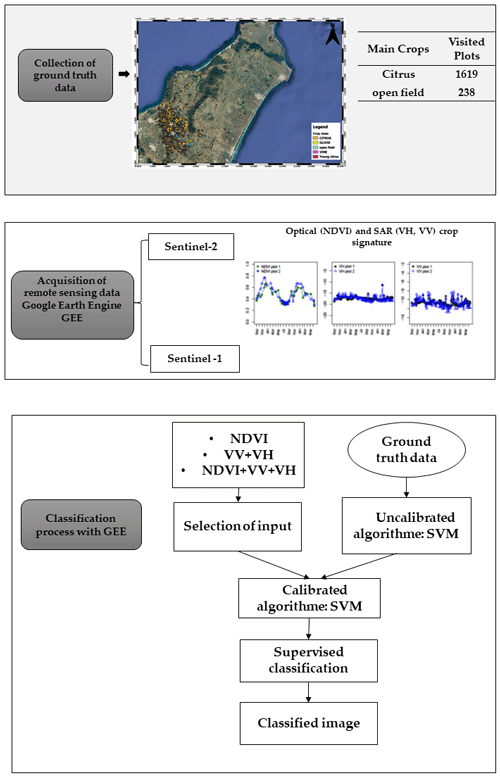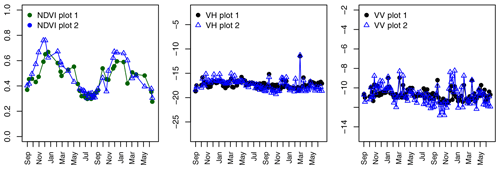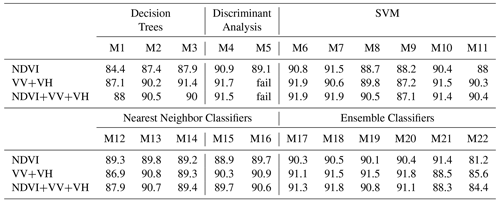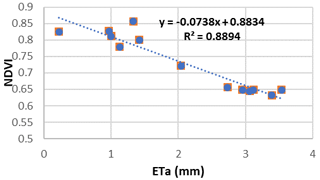Assessing the Accuracy of Multiple Classification Algorithms Combining Sentinel-1 and Sentinel-2 for the Citrus Crop Classification and spatialization of the Actual Evapotranspiration Obtained from Flux Tower Eddy Covariance: Case Study of Cap Bon, Tunisia
Land use and water resources are closely linked. Every single type of land use has a different influence on the hydrologic cycle, consequently impacting the people and the natural resources. The use of advanced technologies, for example monitoring the agricultural resources with remote sensing, offers the possibility to assess the water demand, to know the total cultivated area with the precise distribution of crops and enables the regularly acquisition of data distributed in space and time. The citrus sub-sector is of paramount importance in the Tunisian agricultural sector. The Cap Bon region has the main production area with 75 % of the total citrus area. The possibility of classifying citrus crops is important for water resource management at regional scale and for economic stability. Given the socio-economic importance of the citrus sector in the Cap Bon region, it is very important to have accurate estimation of the total area of citrus plots in this region. Therefore, the main objectives of this current work are:
-
To integrate multitemporal synthetic aperture radar SAR data, Sentinel-1, and optical data Sentinel-2, together to determine the best machine learning algorithm that allowed obtaining the most accurate citrus crop classification in the region.
-
To study and analyze the temporal signatures of the Normalized Difference Vegetation Index (NDVI) of the classified crops, mainly the citrus, with the purpose to provide the maximum amount of information that allow the differentiation between the crops.
-
To study the potential relation between NDVI and Actual Evapotranspiration (ETa) fluxes measured with the eddy covariance method for a citrus orchard to extrapolate the eddy tower measurements to greater scales.
To achieve these objectives, we evaluated the performance of 22 nonparametric classifiers during the period September 2020–June 2021. Additionally, ET measured by the eddy covariance method was available for the same period, so we tried to find the potential relation between NDVI and Actual Evapotranspiration (ETa). The results revealed that the best performing classifier is the Support Vector Machine SVM with an accuracy around 91 %. Consequently, our results provided a significant contribution to the citrus classification in the Cap Bon region but can be further improved. Also, the obtained results highlighted the potential to extrapolate accurate ET estimation to larger scales using the vegetation index obtained from Sentinel-2 data.






